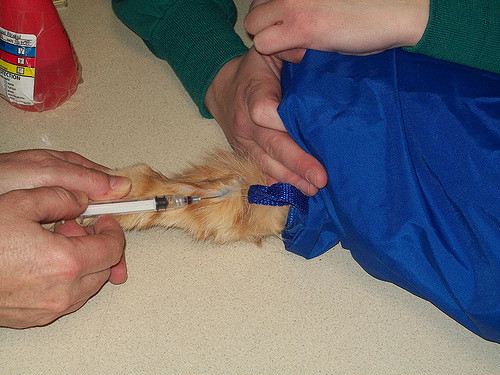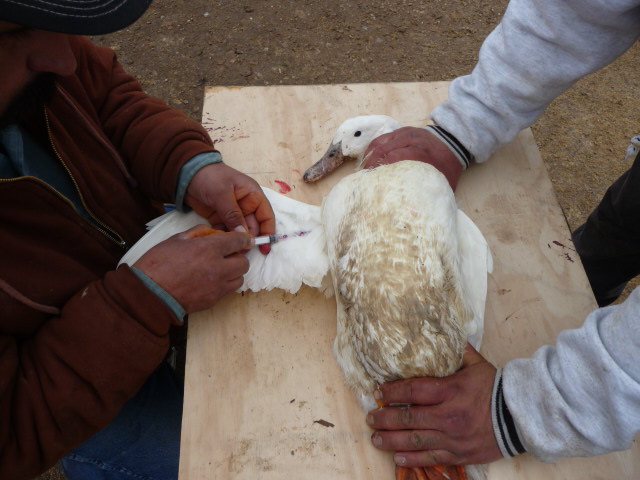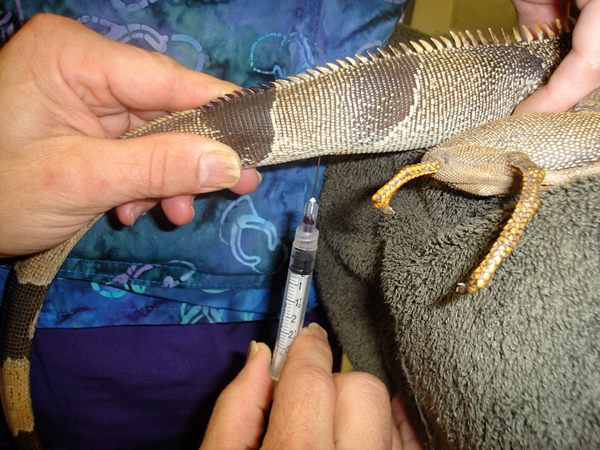CLINICAL BIOCHEMISTRY is a science that examines the body and its various parts of fluid and tissue (biopsies) taken or discarded from the body in terms of diagnosis and course of the disease. Results are also used in monitoring and determining treatment procedures and prognoses.
Briefly; Clinical biochemistry is a clinical-specific laboratory science.
Clinical Biochemistry studies abnormal mechanisms that deviate from normal at the molecular level. It makes use of laboratory techniques and molecular mechanisms developed for this task. It reaches the target indirectly, but thanks to the developing technologies, it gives very specific and sensitive results.
Annotation
Physiopathology means the functional changes associated with or resulting from disease or injury. It examines the physiological changes that accompany a particular disease. In other words, it is physiology that occurs in an abnormal internal environment, or metabolic reactions. It is also called pathophysiology.
Clinical biochemistry and physiopathology can be defined as intertwined disciplines. It is also defined as the branch of clinical pathology that covers the analysis of body fluids and tissues, cells, and the interpretation of test results in relation to health and disease.
THE GOAL OF CLINICAL BIOCHEMISTRY
The main goal of this discipline is to ensure that the students studying veterinary medicine gather information on the theoretical and practical knowledge of Biochemistry on the case and if necessary to explain all the information and skills that can be used in clarifying the molecular mechanisms of the disease or disorders and in the selection of the parameters which may be helpful in diagnosing the disease and in the interpretation of the test results.
Clinical biochemical tests play an important role in the path to disease diagnosis. 1 out of 3 laboratory tests performed in hospitals is a clinical biochemical test. In addition to the functions it undertakes in diagnosis and prognosis, there is also an important role in preventive medicine. It helps to evaluate animal nutrition and aquaculture problems, to observe differences and relations or interactions between species, breeds, and physiological and regional conditions, and to determine population normals.
Clinical biochemistry and biochemistry are directly related to clinical medicine and many other scientific disciplines. It can even be said that some of them were born out of biochemistry.

This figure also indicates that knowledge of biochemistry and clinical biochemistry is beneficial in various disciplines.
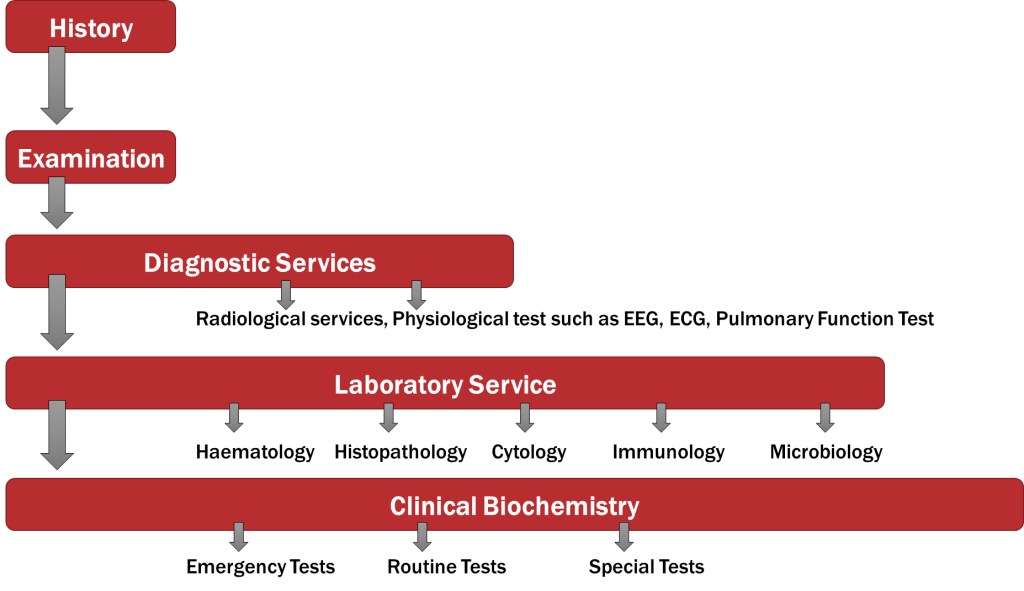
BIOLOGICAL MOLECULES INVESTIGATED IN CLINICAL BIOCHEMISTRY
Metabolites
They are the end products or resultant molecules, or sometimes intermediate molecules of metabolic reactions. Concentration measurements give information about metabolism. Their concentrations are expressed in conventional (e.g., mg/dL, g/dL) or SI (e.g., mmol/L) units in serum or plasma. Approximately 60% of clinical biochemistry analyzes involve metabolites.
E.g.: Urea, Creatinine, Albumin, Protein-Total, Bilirubin, Cholesterol
Enzymes
They are normally intracellular protein molecules; Except functional enzymes found in plasma. High activity generally refers to cellular degeneration, except for functional plasma enzymes. 30% of clinical biochemical analyzes include enzymes.
Eg.: AST, ALT, GGT, CK, LDH…
Minerals
They are macro and micro (trace) elements. They have important functions in body fluids and tissues such as energy production, balance in osmotic pressure, acid-base balance, neural function, and being a cofactor in enzyme activation.
Eg.: P, Ca, Na, K, Cl, Zn, Cu, Co, Fe…
Hormones, Vitamins and Others
They are found in trace amounts in body fluids and tissues. Serum or plasma levels are measured in ng, pg, nmol, or pmol. The functions they involve are extremely important. About 10% of the biochemical analyses include these molecules.
Eg..: Steroid hormones (Progesterone…), 25-OH Vitamin D3, Total T4…
BIOLOGICAL MATERIALS
Blood
It is a biological fluid circulating in the vascular system. It contains dissolved molecules and suspended cellular components (erythrocytes, leukocytes, and platelets). In its chemical composition, it contains 85% water and 15% dissolved substances. These rates vary among animals, depending on the metabolic state, and physiological and pathological conditions.

Blood is a carrier system. It has duties such as keeping pH and osmotic pressure in balance in tissues and organs, maintaining body temperature, providing defence mechanisms against infections and carrying oxygen.
Is the time of blood sample collection important? This is a critical question. It is usually expressed as 12 hours after the last food intake. However, it may differ depending on the species of animal. For example, this statement is not valid for ruminants.
Blood samples are taken into special blood tubes and serum or plasma is separated by centrifugation. Both are the liquid part of the blood and the main difference between the two is the presence of fibrinogen. There is no fibrinogen in serum but plasma has fibrinogen. To obtain plasma, blood must be collected into tubes containing an anti-coagulant (e.g., EDTA). Click for the differences between serum and plasma.

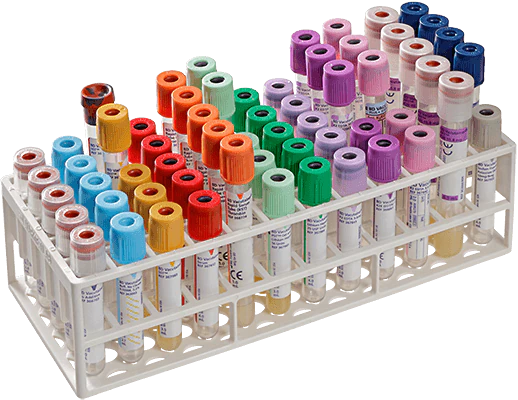
Collection sites: Artery, Vein, Capillary?
Blood is collected mainly from venous vessels. In addition, blood samples can be taken from arteries or capillaries when necessary.

Preferred blood vessels by animal species
- Ruminants: Vena jugularis, vena caudalis mediana (coccyeal vena)
- Cats and dogs: Vena cephalica antebrachii, vena saphena lateralis, vena saphena medialis, vena jugularis
- Chickens: Vena ulnaris
- Rabbit: Vena auricularis
- Rodentler: Vena caudalis, heart, juguler vein
- Other Reptiles: Vena jugularis, vena caudalis, vena cephalica, cervical venous sinus
Urine
Urine is the ultrafiltrate of blood or plasma secreted from the kidneys. The blood is filtered (~ 1700 L) through the glomerulus of the nephrons, the functional unit of the kidney. A nephron unit consists of Bowman’s capsule (the glomerulus), proximal convoluted tubule, the loop of Henle, distal convoluted tubule, and collecting ducts to which it attaches. Electrolytes, glucose and amino acids are reabsorbed in proximal convoluted tubules. Na, Cl and H2O are reabsorbed in the distal convoluted tubules. All these processes are regulated by hemodynamic and hormonal factors.

The main functions of urine include maintaining the balance between extracellular and intracellular fluids, maintaining acid-base balance and removing waste metabolite products from the body.
Urine content is made of water (~95%), salts (Na, Cl, K, Ca, Mg …), acids and bases (H+, OH-), breakdown products that occur during metabolism (such as urea, uric acid, creatinine), toxic or detoxified ingredients. In addition to these, substances that have reached a hyper level in the blood (such as glucose, acetone, and bilirubin…) may be included in the urine content.
While collecting urine samples, attention should be paid to sterile conditions and sufficient amounts should be collected. Various techniques can be used for urine collection: ground collection, spot urine (free capture), catheterization, and cystocentesis.

Urine Analysis or Urinalysis
- Physical Analysis: It is performed without any action. Colour, odour, turbidity Amount, Specific Gravity/Density, pH.
- Chemical Analysis: Glucose, Protein, Ketone, Bilirubin, Urobilinogen, Nitrite, Blood.
- Microscopic Analysis: It is the examination of urine residue. It is made from the sediment obtained after centrifugation with 400 times (40X) magnification. Organic sediments and Inorganic sediments.
Stool
It is also called faeces. With physical and chemical examination, information can be gained about metabolism and pathological condition.
Within the scope of stool examination, tests such as occult blood, bile pigments, and determination of organic acids, pancreatic amylase, elastase, fat droplets, and starch can be performed. Apart from these, examinations such as cell and parasite searches can be performed.
Other Biological Materials
Lymph, sweat, tears, humour aqueous, digestive secretions, saliva/saliva, puncture fluids (Synovial fluid, cyst fluid, amniotic fluid, CSF), stones (Kidney, Bile, Pancreas) and tissues can be also used as material for laboratory tests.
In general, it is essential to choose the one suitable for the purpose in the selection of biological materials, and the laboratory should be consulted in case of need.
Edited on: 21 December 2022



